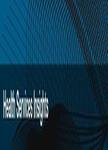版权所有:内蒙古大学图书馆 技术提供:维普资讯• 智图
内蒙古自治区呼和浩特市赛罕区大学西街235号 邮编: 010021

作者机构:Univ Med Ctr Utrecht Ophthalmol Dept Utrecht Netherlands Erasmus Univ Erasmus Sch Hlth Policy & Management Rotterdam Netherlands Dutch Workgroup Sustainable Ophthalmol Utrecht Netherlands
出 版 物:《HEALTH SERVICES INSIGHTS》 (Heal. Serv. Ins.)
年 卷 期:2024年第17卷
基 金:The author(s) received no financial support for the research authorship and/or publication of this article
主 题:Telemedicine digital health carbon footprint greenhouse gasses life cycle assessment
摘 要:Background: Healthcare is responsible for 4% to 10% of carbon emissions worldwide, of which 22% is related to transport. Telemedicine emerged as a potential solution to reduce the footprint, for example, by reducing travel. However, a need to understand which variables to include in carbon footprint estimations in telemedicine limits our understanding of the beneficial impact telemedicine might have on our environment. This paper aims to systematically assess the reported carbon footprint and include variables assessed by the literature, comparing telemedicine with usual ***: The systematic review followed the PRISMA guidelines in PubMed, Medline, Embase and Scopus. A quality assessment was performed using a transparency checklist for carbon footprint calculators. Carbon emissions were evaluated based on four categories, including patient travel, and streamlined life cycle assessment (LCA) for assessing included variables relevant to ***: We included 33 articles from 1117 records for analysis. The average transparency score was 38% (range 18%-68%). The median roundtrip travel distance for each patient was 131 km (interquartile range [IQR]: 60.8-351), or 25.6 kgCO2 (IQR: 10.6-105.6) emissions. There is high variance among included variables. Saved emissions are structurally underestimated by not including external factors such as a streamlined ***: Telemedicine aids in reducing emissions, with travel distance being the most significant contributor. Additionally, we recommend accounting for the LCA since it highlights important nuances. This review furthers the debate on assessing carbon footprint savings due to telemedicine.